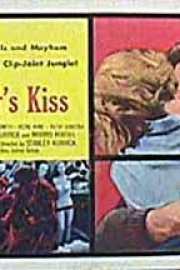Killer’s Kiss
“Killer’s Kiss” was Stanley Kubrick’s second film as a director, and even though it tells a conventional film noir tale, several of the great director’s stylistic tics already began to show. His use of long camera angles; a busy soundtrack to tell the story without a lot of dialogue; and moral quandaries that would haunt his main characters throughout the rest of his career. Ultimately, it lacks the natural brilliance of his best films that would take over his aesthetic in 1957’s “Paths of Glory,” but it does show Kubrick as an engaging, and imaginative, storyteller.
Working from his own screenplay, Kubrick is telling the story of a washed-up boxer (Davey Gordon, played by Jamie Smith), who finds himself mixed up with the wrong people when he gets involved with a former ballet dancer (Irene Kane), who is in deep with a crime boss (Frank Silvera), who not long after, ensnares Davey as well. There’s not really much more to the story than that; at a brisk 67 minutes, this is Kubrick working in short, slick, economical terms as a storyteller, making his turn towards epic, expansive canvases later all the more stunning.
The film follow a traditional noir path, as the boxer and the dancer fall in love and decide to run away together, but the dancer is unable to because of her being mixed up in crime. It’s not exactly the most complicated story Kubrick ever told, but the way he tells it keeps us watching, especially during a chase on the New York streets (and on rooftops) accentuated by striking music and a strong visual style. The film was shot by Kubrick himself, and his gifts for interesting, and iconic, images are immediate even on this most generic of stories. This is truly an example of a great filmmaker elevating average material; the results are, perhaps expectedly, middling compared to the likes “2001,” “Dr. Strangelove,” or “The Shining,” but they show a master beginning to invent himself, which, in some ways, is just as exciting an experience.










